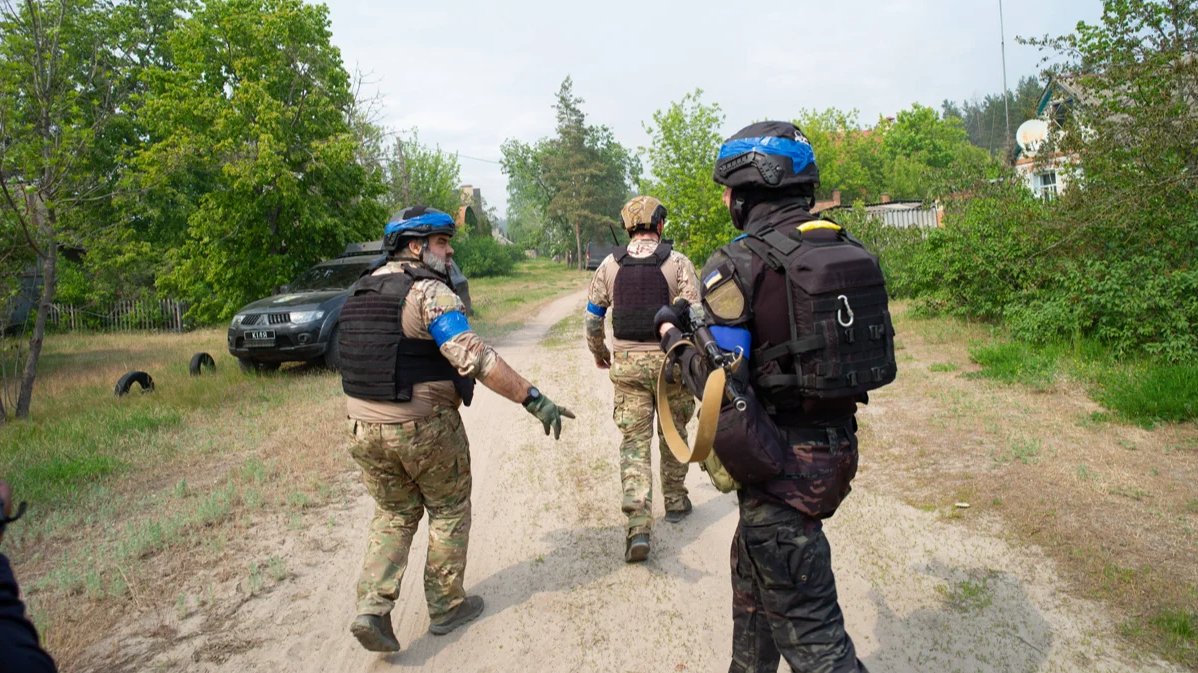For the past week, Russia has been conducting an offensive on a new front in the Kharkiv region of eastern Ukraine, in which its troops have managed to advance several kilometres. How did the Russian military manage to break through Ukrainian fortifications? What mistakes did the Ukrainians make in their defence of the region? Novaya Europe spoke to a number of military experts to get some answers.
On the offensive
On the night of 10 May Russian troops launched an offensive in the Kharkiv region. After initially dropping aerial bombs on the area around Vovchansk, they then broke through the defence line using armoured vehicles.
The Ukrainian Armed Forces were unable to repel the attack, and Russia continued its offensive. Military expert Yury Fyodorov told Novaya Gazeta Europe that long before 10 May, Russia would have deployed a covering force in the region of some 30,000 troops and 400 tanks.
Within the first day of the attack, the Russian Ministry of Defence announced that it had captured two settlements, Kotylarivka and Kislovka. Then the Russian army began moving toward Vovchansk and Lyptsi, advancing between 5–7 kilometres by 15 May, when the General Staff of the Ukrainian Armed Forces (UAF) announced that it had withdrawn troops from the area to “save the lives of military personnel and to avoid losses” but that they would continue to repel the Russian occupiers from more advantageous positions.
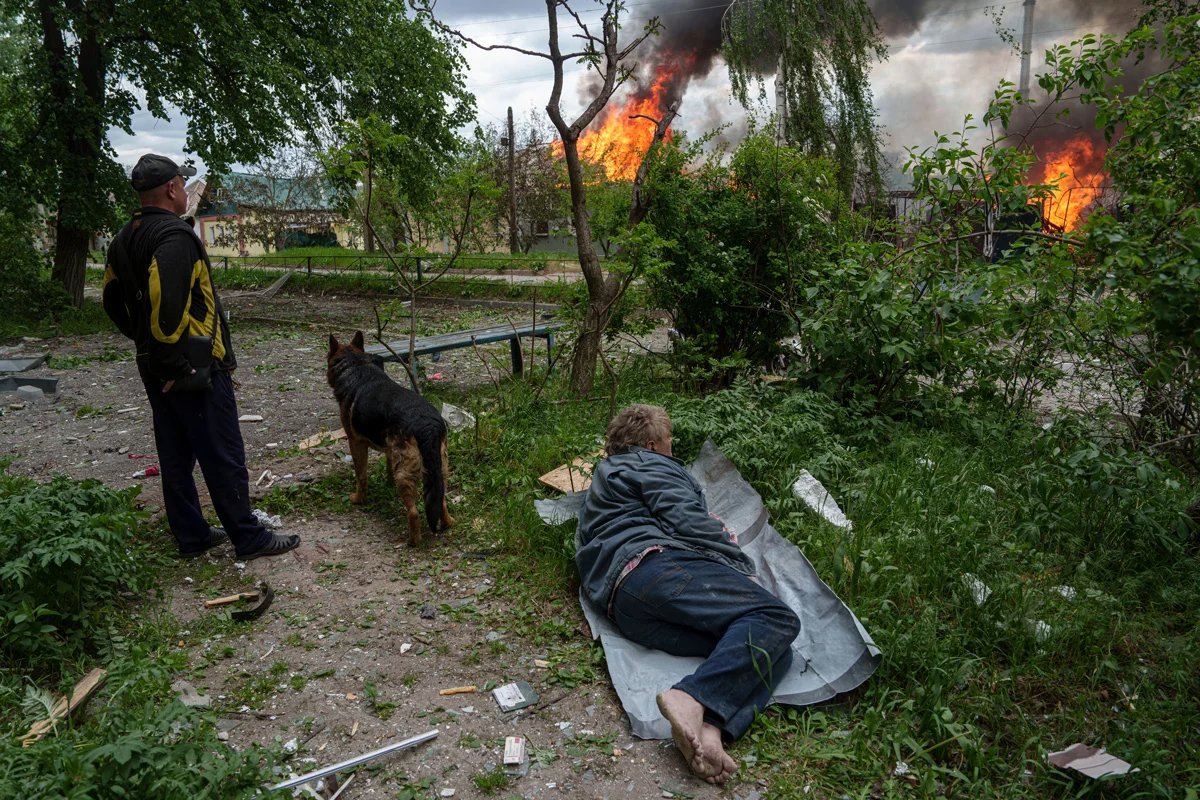
A man lies on the ground watching as his house is destroyed in a Russian airstrike. Vovchansk, Ukraine, 11 May 2024. Photo: Evgeniy Maloletka / AP Photo / Scanpix
Wrong-footed
Russian troops were able to break through the UAF’s defensive lines into the Kharkiv region with relative ease due to engineering deficiencies on the Ukrainian side, Fyodorov said. He explained that there should have been more structures built along the front line, but the Ukrainian authorities had calculated that as the area was constantly under enemy artillery fire, constructing more defensive architecture wouldn’t be worth the risks involved. The UAF also experienced a personnel shortage in the area as a large number of its troops had been redeployed to fight in the Donetsk region, Fyodorov added.
Military expert David Sharp agreed that Ukraine had not been well prepared for the attack, despite warnings from Ukraine’s Main Intelligence Directorate that the Russians were preparing an attack. For weeks, Sharp said, the Ukrainian press had been discussing where and how the Russians might attack the Kharkiv region, so there was no element of “strategic surprise”.
Where the “buffer zone” is concerned, Svitan said that Ukrainian forces had already created one by digging a line of trenches several kilometres back from the border. “Putin wants to march in and claim that he created that,” Svitan said.
The day after the offensive began, the commander of the Ukrainian operational-tactical group in charge of Kharkiv, Yury Galushkin, was removed from his position and replaced by Brigadier General Mykhailo Drapaty, who led the operational-tactical group in charge of Kherson until February. Drapaty is considered “one of the most promising Ukrainian officers,” according to military expert Kirill Mikhailov, so his appointment shows how grave the Ukrainian General Staff considers the situation to be.
But the mistakes made by the UAF top brass were not the only issues, Mikhailov said; there were no defensive fortifications at all in the Kharkiv region towns in the vicinity of the Russian border. Military expert and Ukrainian reserve colonel Roman Svitan said that Vovchansk, the city which pro-Russian channels claim Russian troops have already captured, was quite simply a very poorly defended city.
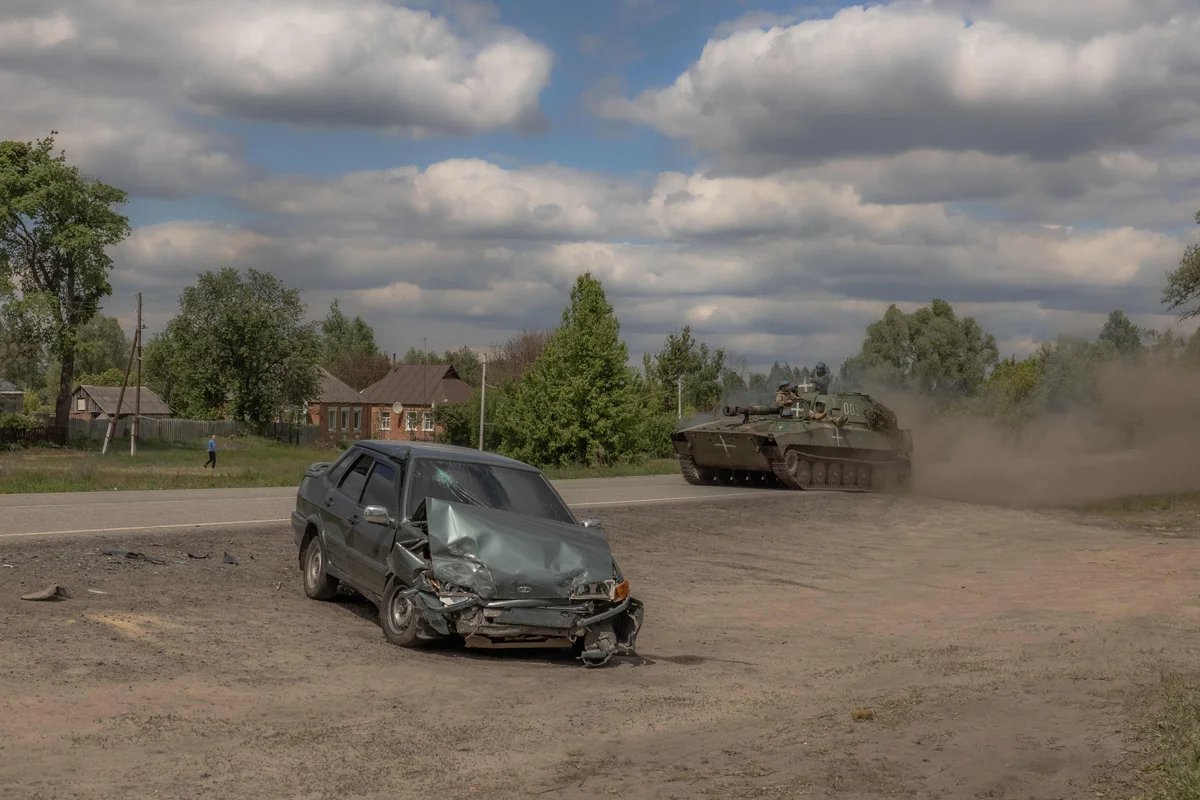
A Ukrainian howitzer drives past a damaged car on the road to Vovchansk, 12 May, 2024. Photo: Roman Pilipey /AFP / Scanpix
Driven to distraction
The region is not, however, an obvious target for Russia. So why did the Russian command make the decision to advance on the area? Reuters suggested that the Russian army sought to push the defence line 10 kilometres back from the Russian border to create a buffer zone, making it harder for Ukrainian artillery to mount attacks on Russian residential areas near the frontier. Ian Matveyev, a military analyst at Alexey Navalny’s Anti-Corruption Foundation, agreed this might be a motivation, adding that a buffer zone would in particular make it more difficult for Ukrainians to shell the western Russian city of Belgorod.
Svitan said another possible Russian goal was distraction: by forcing the Ukrainian command to transfer reserves to Kharkiv from the Donetsk region, Russia could weaken their defences there. He also said that while Russia did not “need” Kharkiv, the Russian Defence Ministry would certainly not object to capturing the railway line that runs from Belgorod through Vovchansk to Kupyansk. The Russian army could try to push the Kupyansk garrisons past the Siverskyi Donets River to “liberate” the Luhansk region.
Where the “buffer zone” is concerned, Svitan said that Ukrainian forces had already created one by digging a line of trenches several kilometres back from the border. “Putin wants to march in and claim that he created that,” Svitan said.
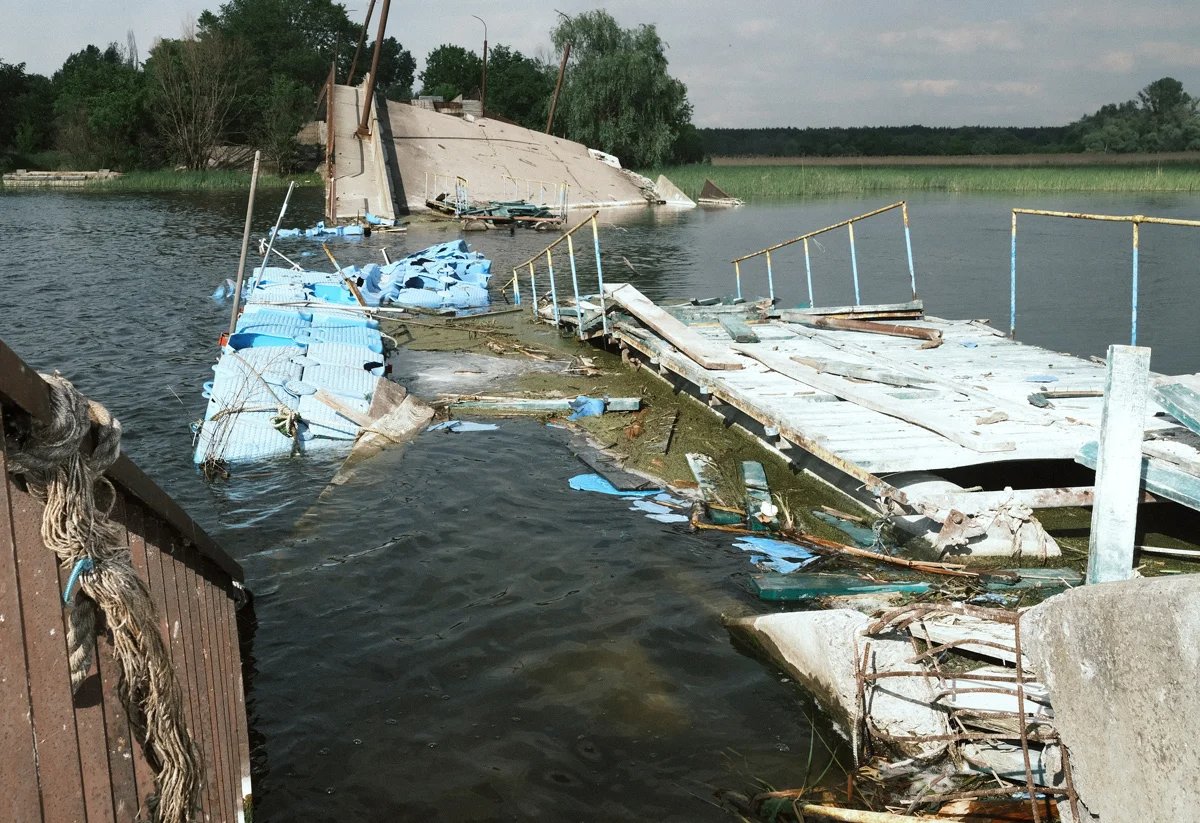
View of a damaged bridge near Vovchansk, 12 May, 2024. Photo: Georgy Ivanchenko / EPA-EFE
However, Oleksandr Musiyenko, head of the Kyiv Centre for Military Legal Studies, part of the National Defence University of Ukraine, said that the Russian authorities had begun to speak of a “buffer zone” at a time in the war when their own strategic objectives had become unclear, their numbers were dwindling, and their troops had encountered “serious, effective resistance from Ukraine”. He added that he thought the real goal of the operation was to pull Ukrainian troops and reserves from Donbas, as well as to encircle Kharkiv if possible.
The Russians have little chance of capturing Kharkiv, despite their recent advances, according to Mikhailov, who pointed out that while the 30,000 Russian soldiers reportedly involved in the offensive might be sufficient to create a buffer zone on Ukrainian territory, it would be limited to the area around the border, and troop numbers would be insufficient to surround Kharkiv.
Matveyev said that the Russian army had not yet organised a large-scale offensive, adding that if the Ukrainian army could hold out for one to two weeks, the situation would “stabilise”.
In Sharp’s opinion, the Russian goal in the war remains unchanged: to seize as much Ukrainian territory as possible. He agreed with Mikhailov that the current Russian offensive was insufficiently large to capture Kharkiv, but he conceded that it would be easier for the Russian military to “influence” Kharkiv from their new position. For instance, Sharp said, Russian forces could now fire on Kharkiv more regularly, “driving residents from the city and causing severe economic damage to Ukraine”.
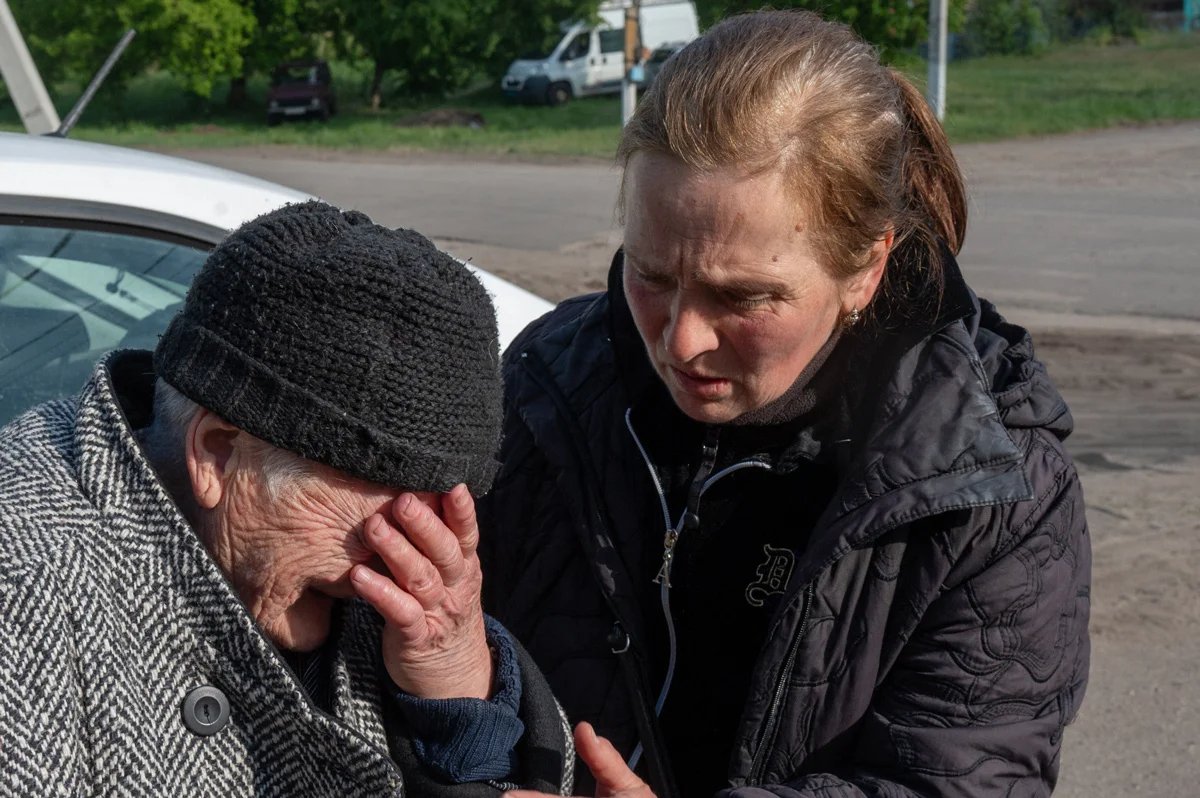
Evacuating Vovchansk residents, 12 May, 2024. Photo: Stringer / Anadolu / Abaca Press / DDP Images / Vida Press
‘Giddy with success’
If the Russian military advances into the Kharkiv region, Sharp said it would pose a threat to Ukrainian troops near Kupyansk, a group that he said had always been a priority target for the Russians.
However, according to Musiyenko, Russian troops are now most likely to concentrate on local tactical targets, adding that Russians were “giddy with success” after successfully penetrating Ukrainian defensive lines and entering Ukrainian territory, but that substantial Ukrainian resistance had dashed their hopes of a rapid offensive, forcing them to stop their advance near Vovchansk.
Matveyev said that the Russian army had not yet organised a large-scale offensive, adding that if the Ukrainian army could hold out for one to two weeks, the situation would “stabilise”, while Svitan said Russian troops could “disturb the peace” in the “grey zone between the border and fortified areas” but that for now Kharkiv was most likely not in any serious danger.
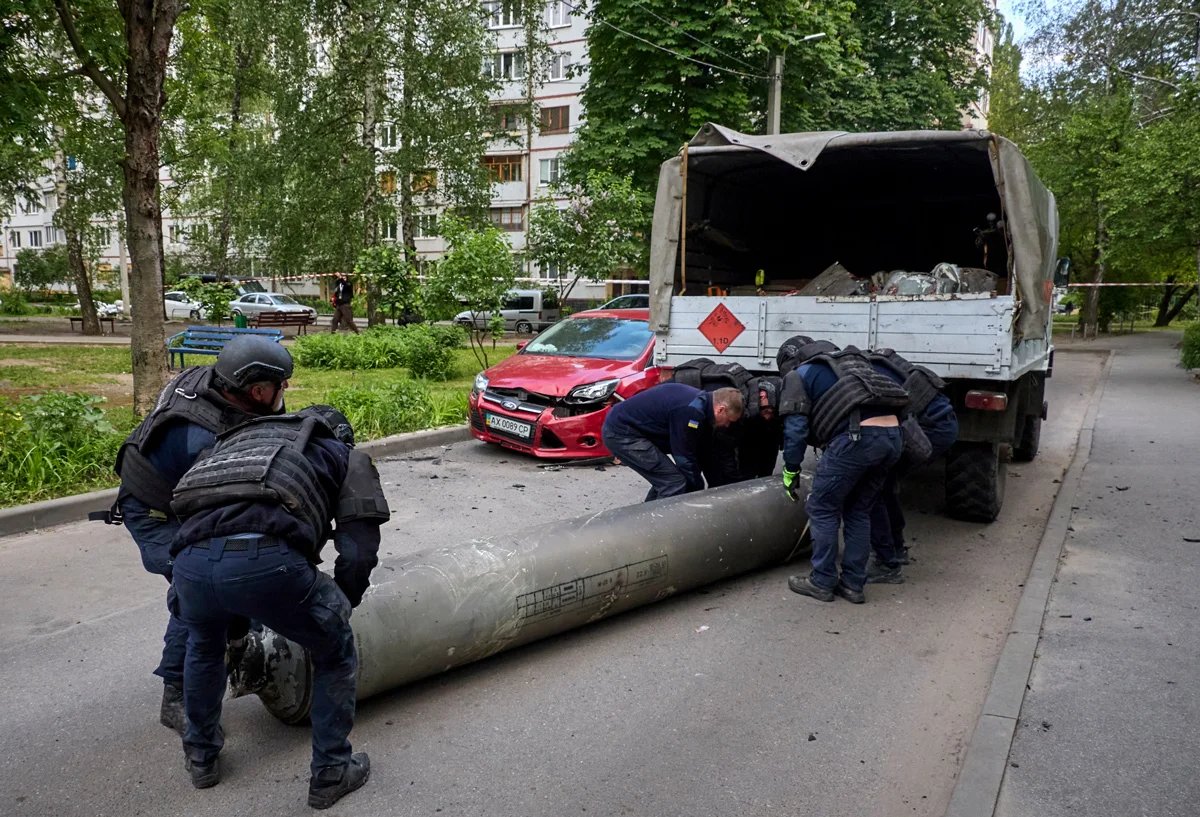
Ukrainian rescue workers load debris from a Russian S-300 missile into a truck after shelling a residential area in Kharkiv, Ukraine, 14 May, 2024. Photo: Sergey Kozlov / EPA-EFE
